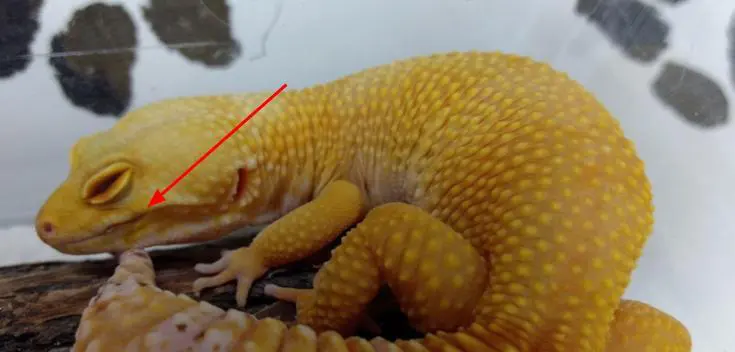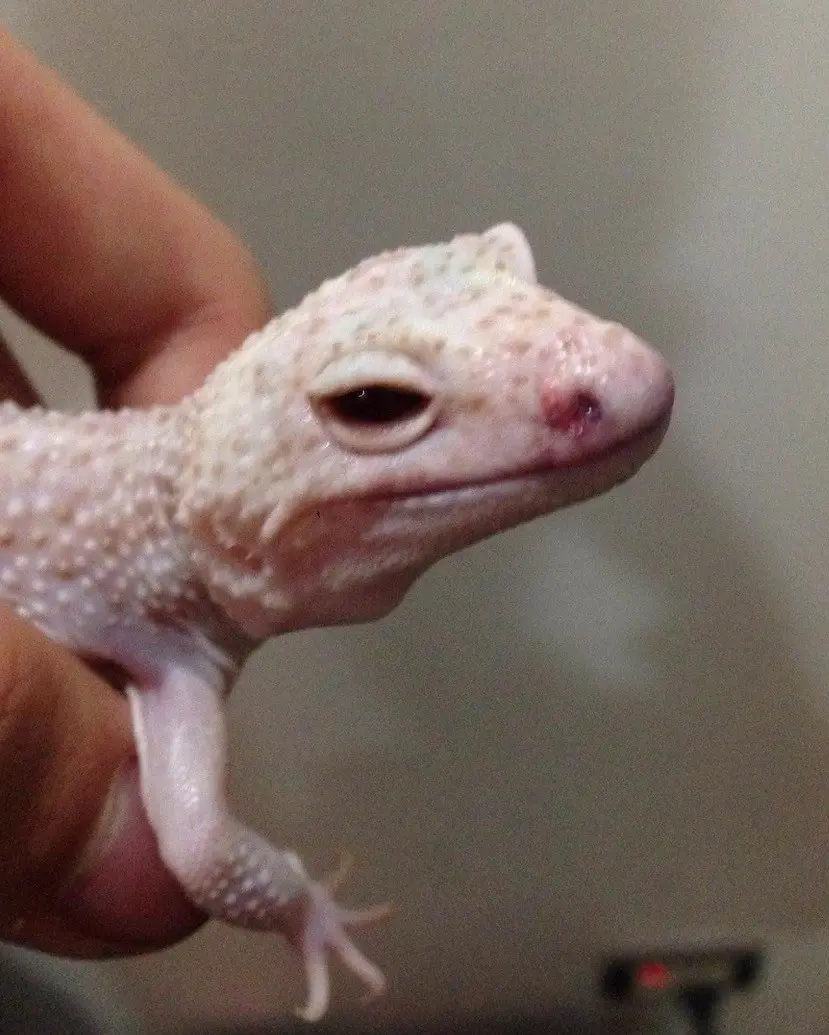Just like humans, leopard geckos can also suffer from oral health issues.
Leopard geckos are polyphyodonts, which means they have the ability to replace their teeth. With over one hundred teeth, they replace teeth every three to four months.
Mouth rot is a common disease, negatively impacting the leopard gecko’s mouth and gums.
What is Leopard Gecko Mouth Rot?
Leopard gecko mouth rot (Infectious Stomatitis) is very common, developing when the reptile is stressed and its immune system is weakened.
This allows bacteria to grow inside the mouth.
The problem is that when a leopard gecko gets mouth rot, it’s not only its oral health you have to worry about. Mouth rot can cause a number of health problems.
The good news is that you can easily monitor and treat mouth rot.
Signs and Symptoms

You may to want to take the time to check your leopard geckos mouth on a regular basis. You can look for food that may be stuck between the tiny teeth, or any cuts in the mouth or gums.
If you notice any of these signs, then look for developed symptoms, which includes:
- Lack of appetite
- Reduced intake of water
- Saliva thickens
- Yellow plaque on the gums or mouth
- Swollen gums
- Face and head swelling
Causes
Mouth rot usually develops when your leopard gecko is stressed. Stress weakens the immune system, which allows the bacteria in the mouth to grow and multiply.
In the majority of cases, mouth rot occurs as a result of stress, which could be a result of incorrect temperature in the enclosure, wrong humidity levels, overcrowding, parasites, and poor nutrition.
These are all significant stresses that can negatively impact the reptile’s immune system, making them more susceptible to infection.
Monitoring your temperature and humidity levels is essential to your reptile’s overall health.
Related –Effective ways to heat up a leopard gecko enclosure.
In addition, ensure you provide your leopard gecko with the perfect habitat, mimicking its natural environment.
This means choosing an enclosure no smaller than twenty gallons for one leopard gecko.
You will also want to ensure you provide a healthy diet of crickets, mealworms, and cockroaches.
Treatment

Due to the fact that there are underlying causes for mouth rot, the focus should be to rectify what is causing stress.
You will want to pay close attention to diet, temperature, humidity, and tank size.
Ensure you provide a warm and cool side of the enclosure with a minimum of twenty gallons for one leopard gecko.
If you don’t identify the cause of your gecko’s stress, chances are the infection will return once you complete a course of treatment.
Professional treatment is often needed unless it is a very mild case by simply improving temperature or humidity levels.
In most cases, your gecko will need to visit a reptile professional who will treat your gecko either with an antibiotic injection or by removing any dead or dying tissue and open and drain the abscesses.
They may flush the area with an antiseptic solution and provide topical antibiotics, which will need to be applied daily until all the lesions are healed.
In extreme cases, surgery may be needed, which will remove deeper tissues, even bone.
Ensure you clean the enclosure thoroughly on a regular basis while your reptile overcomes the infection to reduce the risk of external irritants.
Prevention
Prevention is always better than cure and you can reduce the risk of mouth rot in your leopard gecko by providing:
- A healthy diet
- Optimum temperatures with accurate gradients
- Accurate humidity levels
- A clean environment
- A minimum of a twenty-gallon enclosure for one leopard gecko
Summary
Diet and habitat cannot be overlooked when it comes to mouth rot in leopard geckos. If your gecko is showing signs of illness, always check your temperature and humidity levels.
It can be something as simple as increasing or decreasing your temperature or humidity in the enclosure to make your gecko more comfortable.
If you notice signs of mouth rot, such as lesions in the mouth and gums, take your reptile pet to the vet to ensure that if it is mouth rot, you can start immediate treatment.
What topical antibiotic can I use for mouth rot and can I use deluted peroxide to wash the mouth out